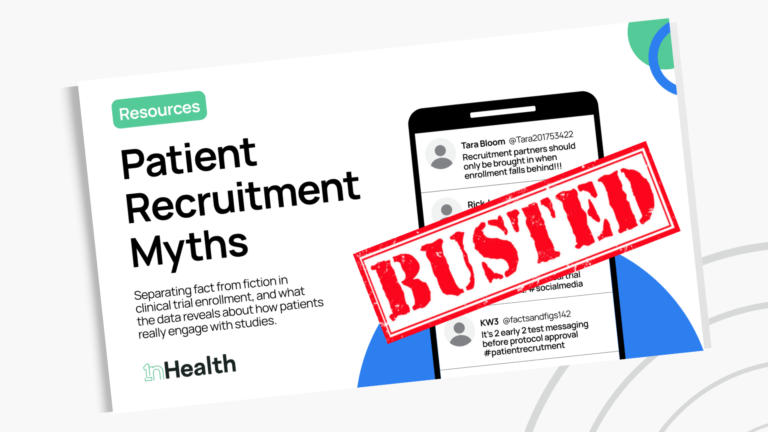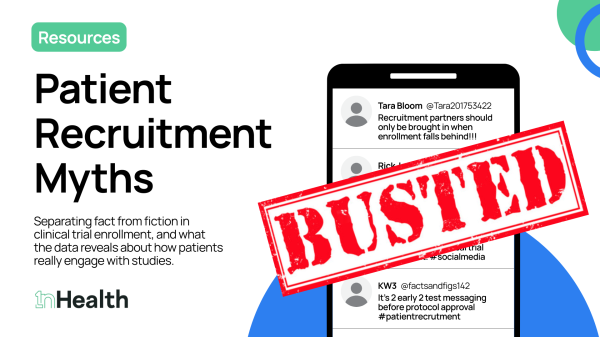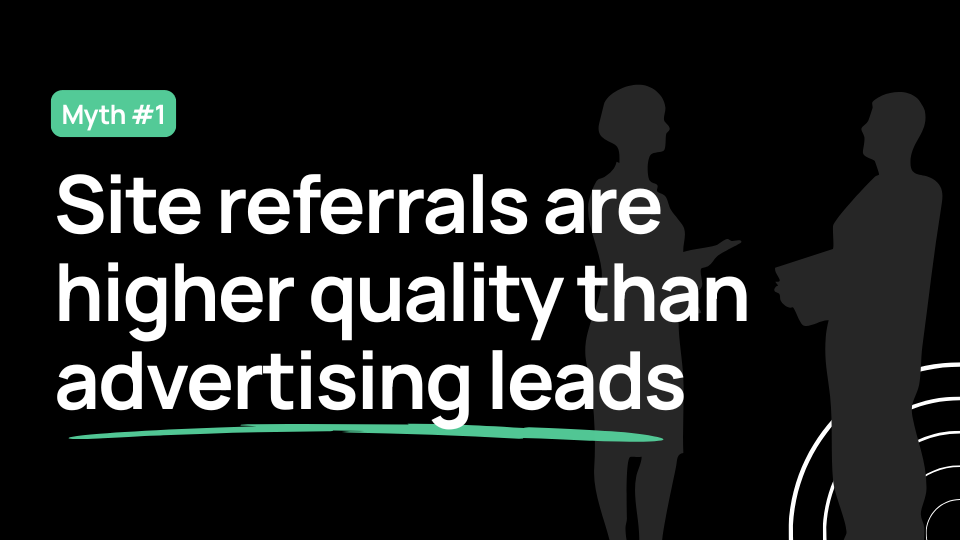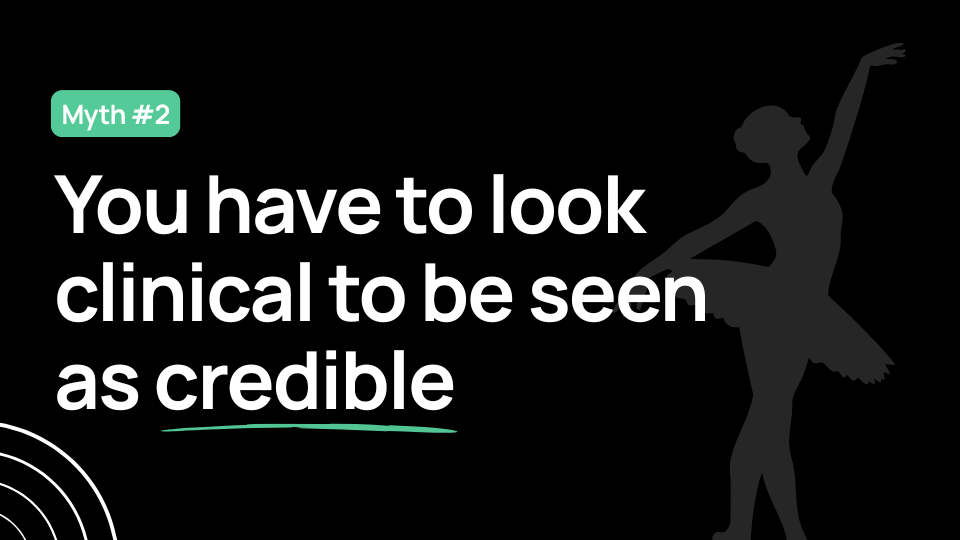Does recruitment have to look clinical to be seen as credible?
This is just one myth we busted!
Download the full eBook to explore all the data and discover what’s really driving quality in patient recruitment.
The patient recruitment trap of playing it safe
In patient recruitment, digital ads are often designed to be conservative, clinical, and cautious. After all, clinical research is serious, and the advertising must adopt a strictly formal tone because credibility comes from conformity.
But what if that very conformity is limiting us? In trying so hard to appear professional and trustworthy, are we instead fading into the background and missing the chance to truly connect with the patients we’re trying to reach?

When "looking clinical" hurts your recruitment and enrollment
This isn’t just a theoretical question; it’s a challenge we encountered firsthand. In this post, we share the story of a postpartum depression trial where we deliberately broke with convention. You’ll see why we felt a bolder approach was necessary, and how that decision ultimately delivered results that exceeded expectations.

The importance of standing out in clinical trials
In patient recruitment, digital ads often default to being conservative, clinical, and cautious. The intent is understandable because clinical research is serious, and advertising must appear formal so patients feel confident in its credibility.
However, research shows that we now have very limited time on screen to make an impact. According to data from the American Psychological Association, the average attention span on a single screen has dropped to around 47 seconds in recent years. Even more telling, Facebook reports that users spend only 1.7 seconds viewing a piece of content on mobile and 2.5 seconds on desktop before scrolling away.
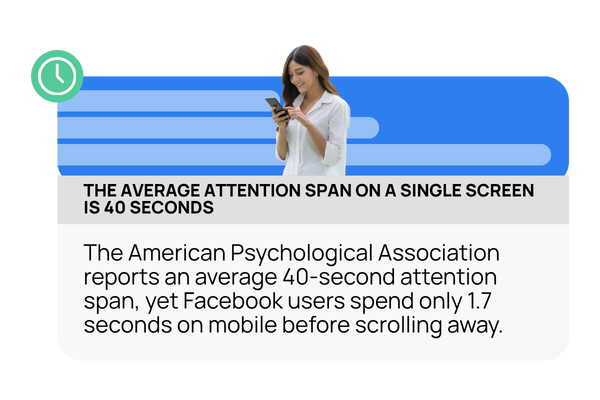

With such fleeting opportunities to capture interest, standing out is not optional. Visual cues play a major role in how people perceive and connect with your message.
Research from HubSpot found that up to 90% of a person’s first impression about something is based on color alone. When recruitment materials look too similar to everything else in the feed, they are easily ignored. Choosing colors and imagery strategically helps you pause the scroll, create emotional resonance, and engage potential patients before they move on.
In the world of patient recruitment, this means embracing creativity that feels human, genuine, and relatable rather than simply safe. A design that captures attention visually and emotionally can transform that moment of recognition into patient interest, pre-screening, and ultimately enrollment. The goal is not to abandon professionalism but to redefine how professionalism looks and feels in today’s digital environment.
Case Study: Completing enrollment 14 months ahead of schedule
1nHealth supported recruitment for a clinical trial of 72 new mothers seeking relief from postpartum depression.
Through A/B testing of a new “psychedelic” angle in copy and imagery, we sourced the majority of consented patients (54%) and randomized patients (56%) while maintaining a lower screen fail rate (58%) than those sourced by sites.
We completed enrollment 14 months ahead of schedule.
The n=72 target was reached by April 2025, with 12 additional randomizations soon after.

Why standing out matters in patient recruitment
Recruiting patients for clinical trials comes with steep challenges. More than 80% of trials fail to reach their enrollment targets within the planned timeframe. That reality means your messaging must do more than simply look credible. It has to be visible, compelling, and persuasive enough to capture attention when time is limited.
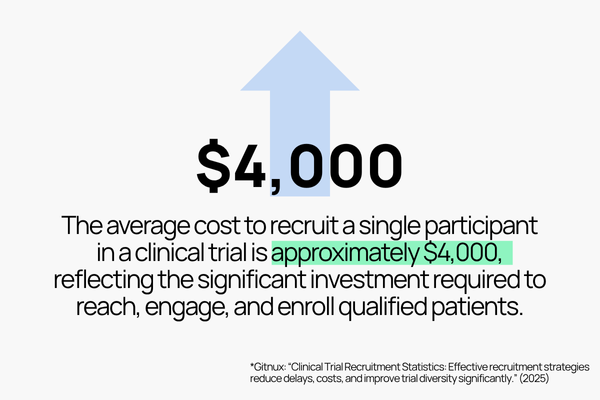
Attention is your first hurdle
When trial sites begin recruitment, every day counts. Data show that studies enrolling between 100 and 500 participants average only about 0.87 patients per site per month. With numbers this tight, creative materials must capture interest immediately. If an ad fails to engage someone in the first few moments, the opportunity to move them into the screening funnel is lost.
Design and message shape perception immediately
The average cost to recruit a single participant in a clinical trial is approximately $4,000. At that level of investment, every detail matters… from the colors you choose to the words you write.
When your design feels generic or overly safe, it risks being ignored. Thoughtful use of visuals and tone can build credibility while helping your message stand out among other studies competing for the same audience.
Emotional connection drives action
Standing out is not just about being different. It is about being meaningful. Studies show that only about 16% of trial participants learned about a study through advertisements, while 73% heard about it from their doctor’s office first. This highlights how much trust and relevance influence action. When your creative approach helps patients feel understood and respected, they are much more likely to click, engage, and enroll.
Rethink patient recruitment and prioritize connection
Our experience with this postpartum depression trial offers a clear lesson for clinical trial professionals. We need to move beyond the assumption that conformity is the safest or most effective path. The data shows that when you take the time to understand an audience’s emotional world, you can create advertising that connects on a much deeper level.
This isn’t about being different for the sake of being different. It’s about being effective. It’s about respecting potential participants enough to speak to them in a human-to-human way. For sponsors, CROs, and sites, this should serve as an invitation to challenge your own assumptions about patient recruitment advertising.
Ask yourself: Are our ads designed to conform to an industry standard, or are they designed to truly engage the people we hope to help? The answer could be the difference between a stalled trial and one that finishes more than a year ahead of schedule.

